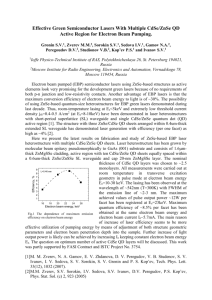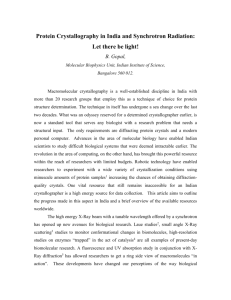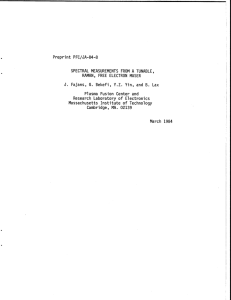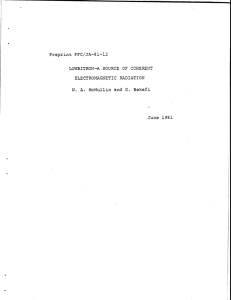FEL - John Adams Institute for Accelerator Science
advertisement
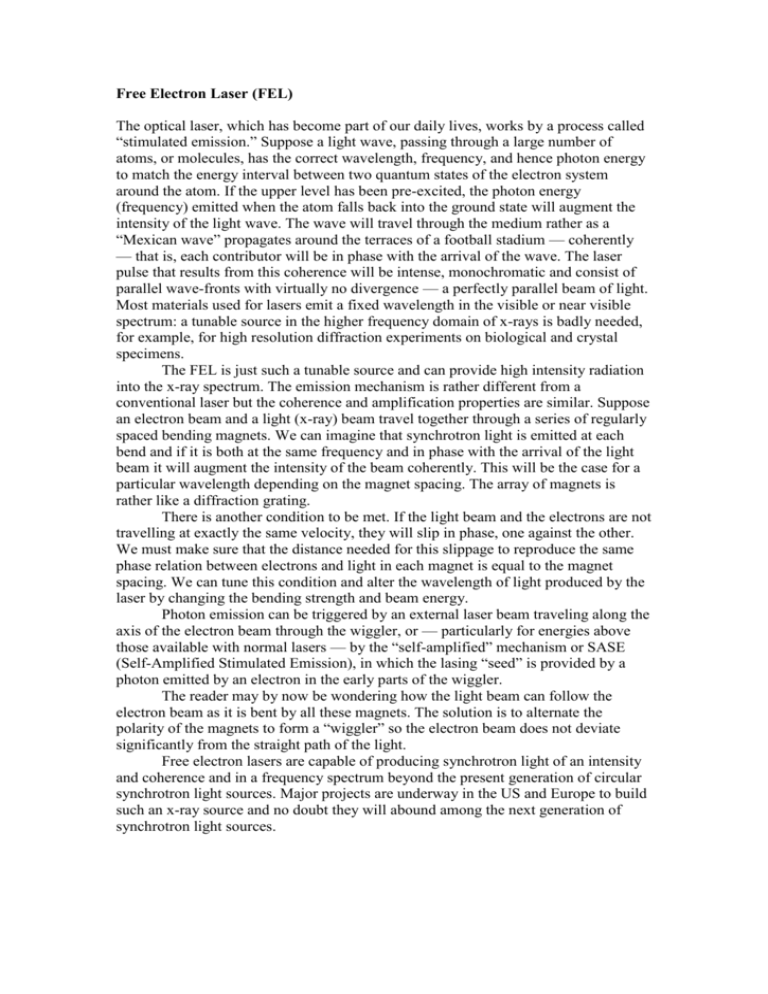
Free Electron Laser (FEL) The optical laser, which has become part of our daily lives, works by a process called “stimulated emission.” Suppose a light wave, passing through a large number of atoms, or molecules, has the correct wavelength, frequency, and hence photon energy to match the energy interval between two quantum states of the electron system around the atom. If the upper level has been pre-excited, the photon energy (frequency) emitted when the atom falls back into the ground state will augment the intensity of the light wave. The wave will travel through the medium rather as a “Mexican wave” propagates around the terraces of a football stadium — coherently — that is, each contributor will be in phase with the arrival of the wave. The laser pulse that results from this coherence will be intense, monochromatic and consist of parallel wave-fronts with virtually no divergence — a perfectly parallel beam of light. Most materials used for lasers emit a fixed wavelength in the visible or near visible spectrum: a tunable source in the higher frequency domain of x-rays is badly needed, for example, for high resolution diffraction experiments on biological and crystal specimens. The FEL is just such a tunable source and can provide high intensity radiation into the x-ray spectrum. The emission mechanism is rather different from a conventional laser but the coherence and amplification properties are similar. Suppose an electron beam and a light (x-ray) beam travel together through a series of regularly spaced bending magnets. We can imagine that synchrotron light is emitted at each bend and if it is both at the same frequency and in phase with the arrival of the light beam it will augment the intensity of the beam coherently. This will be the case for a particular wavelength depending on the magnet spacing. The array of magnets is rather like a diffraction grating. There is another condition to be met. If the light beam and the electrons are not travelling at exactly the same velocity, they will slip in phase, one against the other. We must make sure that the distance needed for this slippage to reproduce the same phase relation between electrons and light in each magnet is equal to the magnet spacing. We can tune this condition and alter the wavelength of light produced by the laser by changing the bending strength and beam energy. Photon emission can be triggered by an external laser beam traveling along the axis of the electron beam through the wiggler, or — particularly for energies above those available with normal lasers — by the “self-amplified” mechanism or SASE (Self-Amplified Stimulated Emission), in which the lasing “seed” is provided by a photon emitted by an electron in the early parts of the wiggler. The reader may by now be wondering how the light beam can follow the electron beam as it is bent by all these magnets. The solution is to alternate the polarity of the magnets to form a “wiggler” so the electron beam does not deviate significantly from the straight path of the light. Free electron lasers are capable of producing synchrotron light of an intensity and coherence and in a frequency spectrum beyond the present generation of circular synchrotron light sources. Major projects are underway in the US and Europe to build such an x-ray source and no doubt they will abound among the next generation of synchrotron light sources.








